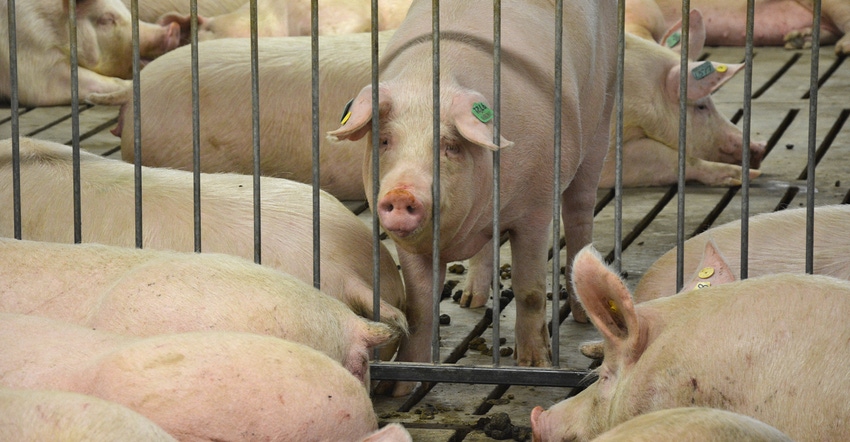
Swine veterinarians in Minnesota, Iowa and Illinois are looking for pork producers who have dealt with porcine reproductive and respiratory syndrome (PRRS) in their breeding herds to participate in a management that will help identify best management practices to control the disease.
The PRRS Outbreak Management Project will collaborate with farmers and veterinarians to gather data on best management practices throughout the 2019-2020 PRRS outbreak season.
Daniel Linhares, veterinarian and assistant professor, Iowa State University College of Veterinary Medicine, says they are just starting to set up herds in the study.
“We have two production systems enrolled with a few farms each [as of mid-October],” he said. “We expect to enroll breeding herds as the PRRS season starts in the upcoming weeks.”
There is no limit or deadline on herds to voluntarily participate, he added. They plan to operate the project for a few years.
Basically, the project’s goal is to use a survey process to capture specific practices currently recommended by field veterinarians and assess their relationship during a PRRS outbreak. Producers will be asked to monitor and sample affected herds, and to share diagnostic results and production data 52 weeks prior to the outbreak and up to 52 weeks after the outbreak. Benchmarking reports comparing outcomes within and between systems and clinics will be distributed monthly, with a detailed report shared quarterly with all participants. Data will be shared in aggregated format to preserve confidentiality on management practices, herd characteristics, health interventions and other practices associated with effective PRRS control in sow farms.
“The project was designed with the vision to better understand practices associated with effective PRRS management and control in breeding herds,” Linhares says. “The more data we have, the better, quicker answers we get. Participating people will help the general industry to advance in knowledge for PRRS control.”
Linhares encourages interested farmers and their veterinarians to contact him if they wish to enroll.
“We will ask them to fill a quick survey and add permission for us to have access to diagnostic data that will be used to measure and benchmark PRRS status over time,” he says.
They will be asked to sign a concert form to participate, too. The consent form explains more details about eligibility criteria, herd PRRS classifications and outcomes, and project benchmark reports. Results will be first shared between participants at least one week in advance of any form of publication or presentation.
Along with Linhares, other researchers working on the project are University of Minnesota College of Vet Medicine veterinarian Cesar Corzo, and veterinarians Clayton Johnson and Aaron Lower with Carthage Veterinary Services in Illinois.
Contact Linhares at [email protected].
About the Author(s)
You May Also Like






